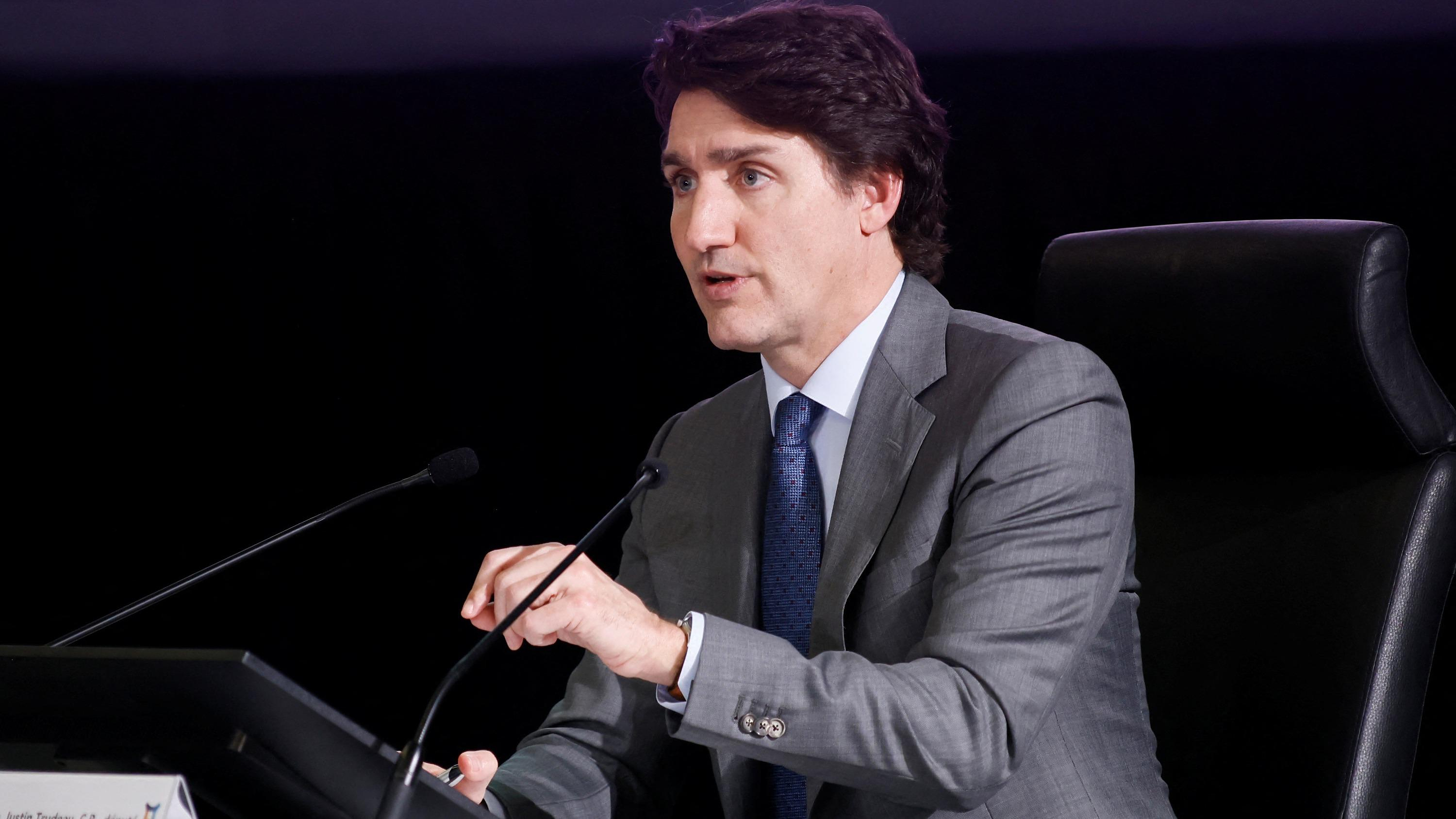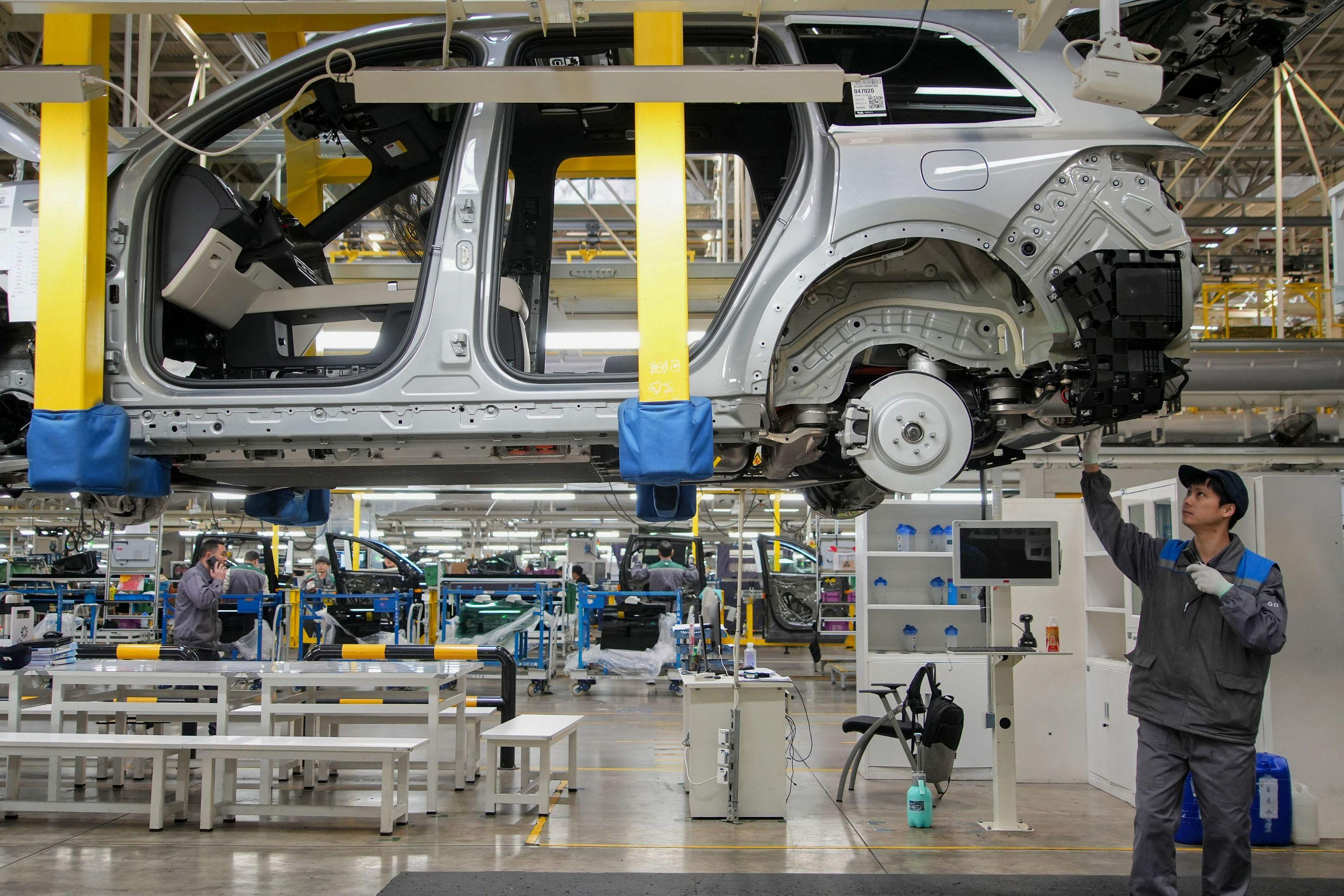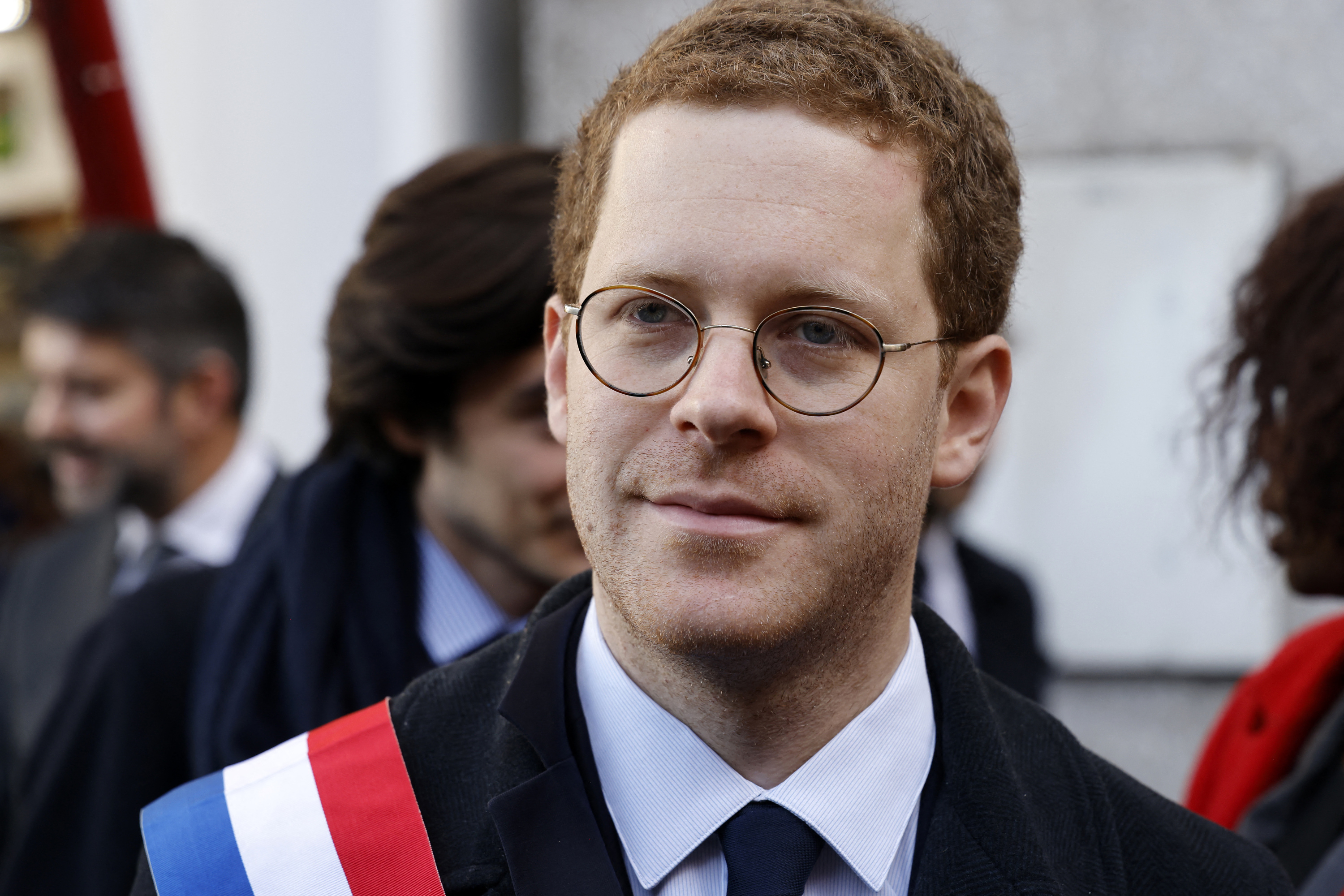The summer was very big, much too big. In France it brought extraordinary heat waves, the least rainy July in decades. It dried up springs and riverbeds, ripped up soil, charred cornfields, and forced trees to shed yellow leaves as early as August. A huge barrage of fire burned down forests, both on the Atlantic coast and in Brittany, which is actually rainy. Drinking water has dried up in more than 100 communities, and they have to be supplied with cistern wagons.
When the first thunderstorms came, they brought lightning floods like in Montpellier, southern France. In Corsica, three people were killed this week by gusts of wind with a top speed of 224 kilometers per hour, twelve others were injured, some of them critically. In Paris, the torrents of rain tumbled down the metro entrances.
Prime Minister Élisabeth Borne has convened a crisis team and speaks of "the worst drought our country has ever experienced". France is used to a lot. Your country is one of the few countries in Europe with both a temperate and subtropical climate.
That is why the people there experience extreme weather events and have long felt the consequences of climate change. The temperature in France has risen by 1.7 degrees since industrialization, the global average is 1.1 degrees.
The country must adjust to this. It has tried to learn its lessons from a series of violent wildfire infernos, heat waves that have killed nearly 20,000, catastrophic floods and torrential rains.
So politicians, city planners and civil protection officers have developed concepts on how to better protect a society from dangers. Many things are easier in the centralized state of France than elsewhere because it coordinates disaster and civil protection for the entire country from Paris.
There is a government website called "Vigicrues", where every citizen can find out about the state of neighboring bodies of water and the immediate threat of flooding.
In 2010, the hydrologist Emma Haziza founded a private research institute and consulting office that advises municipalities on extreme weather conditions and gives citizens tips on how to better protect their homes from flooding. The many deaths in the Ahr flood in the German summer of 2021 "could have been prevented," says Haziza.
Last year, the French parliament passed a “Climate and Resilience Law”. It draws on 146 proposals from a citizens' convention that is unique in the world, which made radical proposals to significantly reduce emissions of the greenhouse gas carbon dioxide.
Even if President Emmanuel Macron has not accepted all the proposals, the law will help France. For example, advertising for fossil fuels was banned and a national “low carbon strategy” was developed.
Politicians are often still acting too slowly and hesitantly, criticize experts from think tanks. Nevertheless, some things work better than elsewhere.
In dealing with forest fires in particular, France is considered a role model throughout Europe. In the 1980s, around 30,000 hectares of forest burned down every year.
With the help of a state-owned fleet of 21 fire-fighting aircraft, targeted prevention policies and government advertising, this figure was limited to 6,700 hectares.
Foresters, volunteers and environmentalists in Germany can only dream of such equipment. If there is a fire in a federal state, the authorities have to contact the Bundeswehr.
However, this summer, with its record-breaking heat and drought, has fueled fires of unprecedented proportions in the north and south at the same time. They also overwhelmed the French. The result: 62,000 hectares of forest went up in flames.
Macron therefore wants to gather representatives of all important offices in the Élysée Palace in the near future in order to adjust the strategy.
If the forest fires start earlier in the future and rage all over the country, 42,000 firefighters will also reach their limits. That was the first time this summer. In addition, some of the fire-fighting aircraft are now outdated, and there are no longer enough. The government wants to buy new ones.
In Germany, after several large forest fires, the federal government is now discussing how it could strengthen civil protection. The FDP has suggested buying its own fire-fighting aircraft.
Macron is already one step further. He thinks of a European solution. He wants to double the joint operational fleet of twelve fire-fighting aircraft stationed in different countries.
It is estimated that two-thirds of the French are at risk from the changing weather. They live in flood plains.
Or live in one of the ten million houses that stand on clay soil. This soil contracts strongly in summer and expands in winter, causing serious cracks in structures.
The think tank I4CE, short for Institute for Climate Economics, estimates that France would have to invest at least 2.3 billion euros every year to be well prepared for heat waves, floods and fires in the future.
The French geographer Magali Reghezza-Zitt, member of the High Council on Climate Change and specialist in risk reduction, says: "In view of the irrevocable effects of climate change, we have to completely rethink where and how we will live in individual regions of the country." Politics is still in the logic of crisis management instead of tackling the problems at the root.
Some coastal regions in the south are struggling with the consequences of climate change. And also the big cities. And hardly any other country struggles with the summer heat as much as Paris.
No other major European city is as densely built and populated as Paris. There is around 5.8 square meters of green space for every inhabitant. In Berlin there is almost three times as much space. Since the start of the industrial age, the average temperature in the French capital has increased by 2.3 degrees, more than in the rest of the country.
No wonder the city passed its first climate plan 15 years ago. This early summer, the city council unanimously decided to set up a commission to simulate and anticipate heat crises and inform residents. Title: "Paris at 50 degrees".
"This is not prophecy or intuition," says local green politician Alexandre Florentin, who will chair the commission from September. “We are already in a new climate regime that is affecting many and will continue to worsen.”
In fact, July 2019 broke the historic heat record in the city with 42.6 degrees Celsius in the shade.
Since 1991, Paris has had a cooling system that is unique in Europe. To do this, water from the Seine is pumped more than 30 meters underground, where it is cleaned, cooled and fed through an almost 90 kilometer long underground canal system and fed into air conditioning systems.
It cools museums, the National Assembly, city hospitals, schools, subway stations and, soon, luxury hotels. The company Fraîcheur de Paris sells the cooler for 137 euros per megawatt hour. At the end, the water is slightly warmed and returned to the Seine.
But there is a lack of parks and green spaces that cool the whole city, not the buildings. The many old zinc roofs on old buildings from the Haussmann era turn into scorching hot surfaces in summer.
Socialist Mayor Anne Hidalgo plans to plant 170,000 trees over the next four years. But the metropolis that has grown since the Middle Ages will not be transformed into a sponge city with special parks as water reservoirs from one day to the next.

 Rishi Sunak wants a tobacco-free UK
Rishi Sunak wants a tobacco-free UK In Africa, the number of millionaires will boom over the next ten years
In Africa, the number of millionaires will boom over the next ten years Iran's attack on Israel: these false, misleading images spreading on social networks
Iran's attack on Israel: these false, misleading images spreading on social networks Iran-Israel: David Cameron wants the G7 to impose “coordinated sanctions” on Iran
Iran-Israel: David Cameron wants the G7 to impose “coordinated sanctions” on Iran New generation mosquito nets prove much more effective against malaria
New generation mosquito nets prove much more effective against malaria Covid-19: everything you need to know about the new vaccination campaign which is starting
Covid-19: everything you need to know about the new vaccination campaign which is starting The best laptops of the moment boast artificial intelligence
The best laptops of the moment boast artificial intelligence Amazon invests 700 million in robotizing its warehouses in Europe
Amazon invests 700 million in robotizing its warehouses in Europe Boeing tries to defuse the long-haul crisis
Boeing tries to defuse the long-haul crisis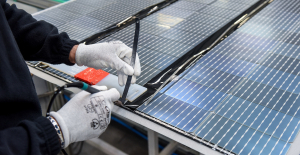 Solar panels: French manufacturer Systovi announces the cessation of its activities due to “Chinese dumping”
Solar panels: French manufacturer Systovi announces the cessation of its activities due to “Chinese dumping” Tesla: canceled in court, Musk's huge compensation plan will again be submitted to shareholders
Tesla: canceled in court, Musk's huge compensation plan will again be submitted to shareholders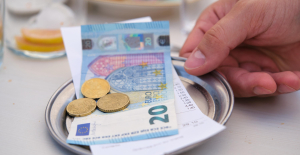 Two, three or a hundred euros: who are the most generous customers with tips?
Two, three or a hundred euros: who are the most generous customers with tips? Bruno Vandelli: one year suspended sentence required against the choreographer for corruption of a minor
Bruno Vandelli: one year suspended sentence required against the choreographer for corruption of a minor Jul fills the Stade de France and the Vélodrome in record time
Jul fills the Stade de France and the Vélodrome in record time Immersion among the companions of the Liberation
Immersion among the companions of the Liberation Provence-Alpes-Côte d’Azur releases several hundred thousand euros for the promotion of the work of Marcel Pagnol
Provence-Alpes-Côte d’Azur releases several hundred thousand euros for the promotion of the work of Marcel Pagnol Skoda Kodiaq 2024: a 'beast' plug-in hybrid SUV
Skoda Kodiaq 2024: a 'beast' plug-in hybrid SUV Tesla launches a new Model Y with 600 km of autonomy at a "more accessible price"
Tesla launches a new Model Y with 600 km of autonomy at a "more accessible price" The 10 best-selling cars in March 2024 in Spain: sales fall due to Easter
The 10 best-selling cars in March 2024 in Spain: sales fall due to Easter A private jet company buys more than 100 flying cars
A private jet company buys more than 100 flying cars This is how housing prices have changed in Spain in the last decade
This is how housing prices have changed in Spain in the last decade The home mortgage firm drops 10% in January and interest soars to 3.46%
The home mortgage firm drops 10% in January and interest soars to 3.46% The jewel of the Rocío de Nagüeles urbanization: a dream villa in Marbella
The jewel of the Rocío de Nagüeles urbanization: a dream villa in Marbella Rental prices grow by 7.3% in February: where does it go up and where does it go down?
Rental prices grow by 7.3% in February: where does it go up and where does it go down? Europeans: the schedule of debates to follow between now and June 9
Europeans: the schedule of debates to follow between now and June 9 Europeans: “In France, there is a left and there is a right,” assures Bellamy
Europeans: “In France, there is a left and there is a right,” assures Bellamy During the night of the economy, the right points out the budgetary flaws of the macronie
During the night of the economy, the right points out the budgetary flaws of the macronie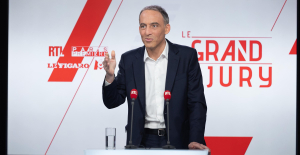 Europeans: Glucksmann denounces “Emmanuel Macron’s failure” in the face of Bardella’s success
Europeans: Glucksmann denounces “Emmanuel Macron’s failure” in the face of Bardella’s success These French cities that will boycott the World Cup in Qatar
These French cities that will boycott the World Cup in Qatar Champions League: “It’s painful, but we have to learn,” says Arteta
Champions League: “It’s painful, but we have to learn,” says Arteta Champions League: “Madrid never dies”, says Ancelotti
Champions League: “Madrid never dies”, says Ancelotti Champions League: Manchester City played “exceptionally”, according to Guardiola
Champions League: Manchester City played “exceptionally”, according to Guardiola Champions League: video summary of the Manchester City-Real Madrid clash
Champions League: video summary of the Manchester City-Real Madrid clash





